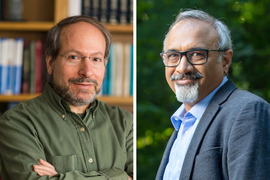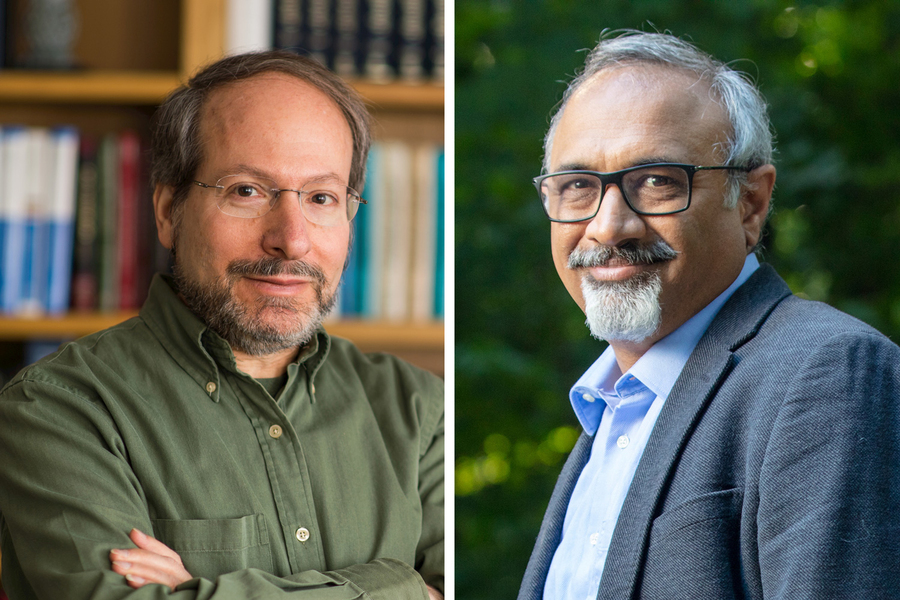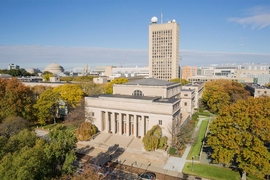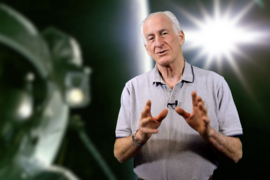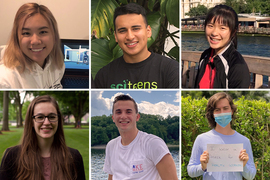MIT’s Task Force 2021 and Beyond, charged by President L. Rafael Reif in May and officially launched in July, has been working steadily since the summer to position MIT for a post-Covid future. The 180-member task force is led by Rick Danheiser, chair of the faculty and Arthur C. Cope Professor of Chemistry, and Sanjay Sarma, vice president for open learning and Fred Fort Flowers and Daniel Fort Flowers Professor of Mechanical Engineering.
Danheiser and Sarma spoke with MIT News about the task force’s activities to date.
Q: Why is the work of Task Force 2021 and Beyond urgent — especially at a time when MIT is already so busy responding and adjusting to Covid-19?
Sarma: We know that the world will be different post-Covid — generally, and in higher education in particular. The pandemic has required us to reassess how we teach, how we learn, how we work, what we research, and how we fund it all.
It has also caused many students and families to reconsider the costs and benefits of in-person education. Finally, it has raised this question: When we are all back on campus, how will we best take advantage of the privilege of being together?
MIT can either lead in shaping this new world, or have it thrust upon us. We choose to lead. To do so, MIT needs to consider with some care the effects, and the opportunities, created by the pandemic.
Danheiser: Covid-19 has forced MIT, like other educational institutions, to rethink its processes and priorities. As part of the Institute’s response, many of us are getting a deep look at systems and practices that were put in place decades ago.
Faculty are teaching remotely, and as part of that we have discovered what works and what doesn’t. They’ve mailed kits to students’ homes for lab work, created videos to inspire learning on a variety of topics, conducted virtual field trips, and leveraged tools and teaching methods to create new ways to build community.
Students are interacting remotely — with each other, with faculty, and with other instructors. They’ve created online study groups and a host of ways to connect through Discord and other tools.
What parts of the above should we keep, even when they’re no longer imposed upon us by the pandemic? The task force is considering these questions.
Sarma: A year ago, most MIT staff and faculty came to campus five days a week. Now we’ve realized that much of our work can be done from home.
This opens new possibilities: Once the pandemic ends, we won’t return exactly to how we had worked before. We have an opportunity now to rethink how we learn and work. We’ll enjoy being together, and be more thoughtful about how we use that time together.
If we don’t do this work now, we risk returning to our old routines out of habit, rather than consciously creating new practices that leverage all that we’ve learned.
Q: How has the task force been gathering information and formulating proposals? What are the next steps in its work?
Danheiser: The roughly 180 faculty, students, and staff from throughout the Institute and Lincoln Lab are divided into four workstreams: academic, administrative, finance and data, and community and culture. We also have two advisory groups, one composed of alumni and one composed of students. All of these teams are meeting regularly, usually weekly, to discuss ideas. A lot of work has gone into idea generation at this point.
We launched an idea bank over the summer; dozens of ideas have been submitted by members of the community. We also held a community forum on July 23 to solicit community input.
Finally, task force members have engaged in a number of workshops and plenary sessions, hearing from visionary leaders with a variety of backgrounds. Some have been from other academic institutions, such a team that spoke with us about a satellite campus that Stanford University opened last year, as well as leaders of innovative organizations such as Olin College and Coursera. We’ve also heard from presenters who offered forward-looking perspectives from outside of academia.
Sarma: The workstreams’ initial ideas are due in early November. We’ll spend a few weeks assessing those ideas, before sharing with the community specific ideas that have been surfaced. We plan to follow up with additional forums to solicit feedback.
We’ll then enter a review period during which we’ll weigh the community’s input and refine and prioritize the ideas. We’ll consider questions like: What can MIT afford to do, and how can we raise any additional resources that may be needed? What impacts will the proposed ideas have on MIT? How do they align with our mission?
Starting around February, we’ll focus on developing implementation plans for those ideas that have emerged from this full process as priority items.
Q: What are some emerging themes that are guiding the proposals under development by the Task Force?
Sarma: We’re preparing for a future that looks different than the past — one where the pace of change and information creation continues to accelerate, and where we need to combine our historic strengths in rigor and innovation with new strengths in interdisciplinary connections, agility, and continuous learning.
We’re rethinking our use of space, leveraging what we’ve learned about remote teaching, learning, and working during the pandemic — what can be done well remotely, and what needs to be done in person — and examining a revamping of our uses of precious space on campus. And we’re looking at updates to our data, systems, and processes, to serve us well in the 21st century.
Danheiser: We’re looking for ways to continue to strengthen our community, even as it is geographically dispersed. How do we celebrate and transmit the best parts of our culture, while improving our equity and inclusion? How do we promote and institutionalize practices that value differences, recognize contributions, support equity, and unite us all in the mission of MIT?
Finally, we’re looking at ways to broaden the scope and intensity of our holistic education and training. We will emerge stronger from the current disruptions if we can cultivate in each member of the MIT community the ability and passion to work wisely, creatively, and effectively for the better world that we all seek.
